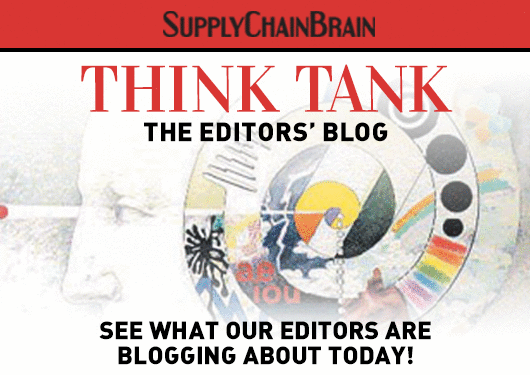
Since the end of the Great Recession of 2007-2008, trade and investment ties between countries have steadily strengthened. In 2014, global "connectedness" finally surpassed its pre-crisis peak. The trend continued in 2015, albeit at a slower pace.
These conclusions come from the fourth edition of DHL's Global Connectedness Index. Published every two years, it measures the state of connectedness by cross-border flows of trade, capital, information and people. Pankaj Ghemawat and Steven A. Altman of NYU's Stern School of Business return as authors of the new study.
“Globalization has served as the world’s engine of progress over the past half century,” said Frank Appel, group chief executive officer of Deutsche Post DHL Group. But the condition of that engine is in question today. One of the first actions by President Trump upon taking office was to abandon the proposed Trans-Pacific Partnership, which would have included the U.S. in a sweeping trade agreement among 12 Pacific Rim nations. The President has also made clear his hostility to the North American Free Trade Agreement (Nafta) among the U.S., Canada and Mexico.
DHL’s overview of the last two years isn’t without warning signs. The U.S. continued to lag significantly in terms of trade “depth” — a measurement of its international flows compared with the size of the domestic economy. In that category, it placed 137 out of 140 countries. (Given the massive size of the U.S. economy, the ranking isn’t entirely surprising.) What’s more, the nation ranked 27th in overall connectedness in the 2016 index, down from 23rd in the previous study.
According to DHL, those relatively poor showings underscore the importance of strengthening trade agreements such as TPP and Nafta, instead of scrapping them. Which suggests that two years from now, when DHL issues its next report on global connectedness, the U.S. will have dropped even further down the list.
A closer look at the 2016 index reveals that trade wasn’t the chief driver behind the recent growth in connectedness after all. The real credit goes to stronger flows of capital, information and people, according to Pablo Ciano, chief executive officer for Central and South America with DHL Express. While it’s too early to draw any definite conclusions, he said in December, the trend signals “a very interesting shift in what we’re seeing in overall connectedness — that capital, information and people are becoming equal to, or even more important than, trade.”
The big winners in global connectedness have essentially remained on top throughout the four editions of the DHL index. The Netherlands again comes in at number one, a reflection of its heavy reliance on logistics and trade with its European Union members. (Seventy percent of its gross domestic product is derived from imports and exports, versus 8 percent for the U.S., Ciano notes.) The next five are Singapore, Ireland, Switzerland, Luxembourg and Belgium — all economies that were built on trade.
The United Kingdom clocks in at eighth place, but whether it can hold onto that ranking following the Brexit vote remains to be seen. British proponents of “leave” say the severing of formal trade ties with the EU will position the country to become even more internationally oriented, focusing on growing economies in Asia and Latin America. Or so they hope. Ciano points out that half of the U.K.’s GDP currently comes from trade with Europe (including Switzerland). “We’ll see how that evolves,” he says.
Despite the steady trend (up to now) toward global connectedness, the DHL index continues to carry a counterintuitive message: “We are not as global as we think.” While U.S. citizens bemoan the undeniably negative impact of global connectedness on domestic jobs, many vastly inflate its actual role in the nation’s economy. For example, surveys have shown that people routinely overestimate immigration levels by a factor of two to three. As the DHL index puts it: “Actual levels of global connectedness are still only a fraction of what people estimate them to be, suggesting an opportunity to correct misperceptions and apprehensions.”
That’s the positive spin on wholesale public ignorance regarding trade and global connectedness. But Ciano doesn’t discount the dark clouds that are forming on the horizon. All evidence points to a continued demonization of trade by the new Administration, even if that attitude weakens the nation’s economic clout in the long run. (Often ignored in the debate over TPP is the political muscle that the U.S. would have gained against China in Asia, given that the latter is not a signatory to the agreement. In fact, it can be argued that the TPP’s primary rationale is to serve as a bulwark against China’s growing influence in the region.)
Ciano prefers to take the sunnier view. “Overall, we’re not alarmed [by growing protectionism],” he says. “We are still very optimistic about the global mindset around trade.” Considering President Trump’s stream of bellicose tweets about multilateral trade agreements, however, it’s just as possible to imagine a scenario whereby that economic engine seizes up and drives into a ditch.







